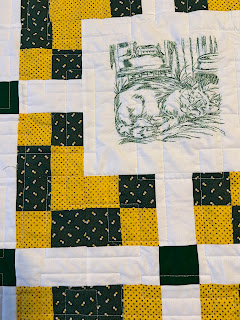Preparing to Fit a Pattern
Our ASG Chapter is embarking on an ambitious journey of guiding our members through the process of making a jacket. If you are fitting a garment pattern to your body for the first time, there are some things you must do to prepare for the task. Some of these things are physical and some are mental.
Let’s talk about the mental tasks first. Priority number one is that you must come to grips with your personal numbers before you begin. That means you must accept your personal measurements as they are currently. Don’t use smaller or larger numbers and try to convince yourself you are going to lose or gain weight before the garment is finished. Please do not put yourself through that agony. It is not worth it. The size of your numbers doesn’t matter. They are simply a map that will be used to get the pattern to fit you. We are all different and all of us are worthy of having clothes that fit. So, please do not fret about your numbers. Either take your measurements yourself or have someone take them for you. Make a note of them so you can use them during the fitting process. Measurements will be taken at the March meeting for those that need help. Wear a close-fitting tee top to the March meeting in preparation for having your measurements taken.
The second mental preparation you need is that of accepting the pattern for what it is. If this is the first time you have ever fit a pattern for yourself or if you are relatively new at pattern fitting, this is not the time to try to redesign the pattern. Choose one of the two pattern options and stick with it. Your goal is to make a great fitting garment. After you have made a garment that fits, then is the time to make design changes by doing a pattern hack or a pattern mash. But not now! You should consider this jacket-making series a learning experience. This could lay the foundation for you to become a pattern fitting expert. All you need is training and experience.
In preparing to fit a pattern, you need to know the finished measurements of the main components of the pattern for the hips, waist and bust. Those measurements can sometimes be found on each individual pattern piece. If the measurements are not given, you must determine them yourself. Do not skip this step. It is important! The area for measuring would be from seamline to seamline. For example, you would measure the distance from seamline to seamline at the bust on the jacket front piece and across the back piece at the bust level. You would then add the measurement from both front pieces to the measurement across the entire back. Then you would do the same at the waist for the front and back pieces and also for the hips including the entire front and back pieces. If you don’t understand this process or the reason it is necessary, don’t worry. It will be explained during one of our meetings about making the jacket. A simple explanation for the reason we need these pattern measurements is we want to be sure the finished garment will fit comfortably over your body in all areas.
The last step in preparing to fit a pattern is to assemble everything you need to fit the pattern. You will, of course, need your pattern, your measurements, and the finished garment measurements. You will also need something to trace your pattern. You could simply cut your original pattern, but I advise against that idea. During the fitting, you may need to make several different changes to the pattern, so you will want to keep your original pattern intact. You could use what is commonly called “doctor’s paper”. That is the roll of thin paper that covers doctors’ exam tables. These are available on-line and in some pharmacy shops. Pellon has several options and is sold at Joann's Fabrics. They have Pellon 830 Easy Pattern non-woven tracing material, Pellon Tracing Paper rolls and Pellon Tru Grid.
In addition to the things talked about in this article, you will need some other sewing supplies to fit and make the jacket. All members participating in this jacket series will be given a supply list before we begin.
We hope you are excited about participating in this Ready Set Sew jacket series. In addition to your sewing and fitting supplies, we hope you will bring your determination to learn and succeed to the kick-off of the Ready Set Sew series at the March Chapter meeting. Look forward to seeing you there.
Judy Huhn
Lansing Clipper member and Neighborhood Group leader for Pattern Works


Comments
Post a Comment